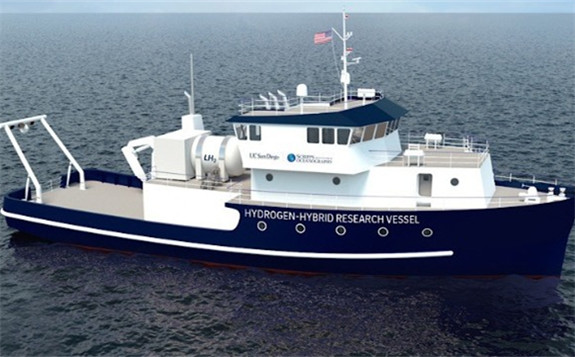The state of California has set aside $35 million for the Scripps Institution of Oceanography to design and build a new coastal research vessel with a first-of-its-kind hydrogen-hybrid propulsion system.

The new vessel will be dedicated to Californian research missions, and it will enable scientists to study and track a range of environmental concerns, including the health of marine fisheries, harmful algal blooms, severe El Niño storms, atmospheric rivers, sea-level rise, ocean acidification, and oxygen depletion zones.
The proposed 125-foot vessel will take three years to design, build, and commission. It will replace the R/V Robert Gordon Sproul, which has been in operation for nearly 40 years and is nearing the end of its useful life.
The hybrid-hydrogen design of this new vessel is a novel development. The ship will feature a hybrid propulsion system that integrates hydrogen fuel cells with a conventional diesel-electric power plant, enabling zero-emission operations. The design is scaled so that the ship will be able to operate 75 percent of its missions entirely using hydrogen fuel, which can be carbon neutral if provided by a renewable energy-powered electrolysis plant. For longer missions, extra power will be provided by diesel generators.
A feasibility study on the hydrogen fuel-cell propulsion technology for the vessel was completed in 2020 by Sandia National Laboratories, Glosten and Scripps, with funding from MARAD. It is possible that at its launch, it will be the first seagoing vessel of its kind in the world.
“Our vision is to build an uncompromising, fully capable oceanographic research vessel that can be powered independently from fossil fuels, and be free from the criteria pollutants and greenhouse gas emissions that diesel-powered ships emit,” said Bruce Appelgate, associate director and head of ship operations at Scripps Oceanography. “In doing so, we hope to both serve our scientists and students while being a world leader for transformational change to clean, nonpolluting shipboard power systems.”
The vessel will be fitted with acoustic Doppler current profilers, seafloor mapping systems, midwater fishery imaging systems, biological and geological sampling systems, and support for airborne drone operations. It will have enough space for up to 45 students and teachers on day trips.